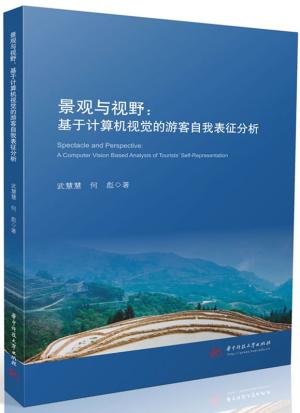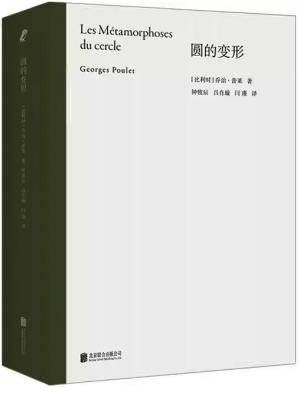新書推薦:

《
观念与秩序:儒学的现代性建构
》
售價:HK$
107.8

《
景观与视野:基于计算机视觉的游客自我表征分析
》
售價:HK$
87.8

《
穿越西方文明 从美索不达米亚到全球时代(全二册) 世界史图书馆
》
售價:HK$
283.8

《
知识的流动:中德文化关系史(1600~1945)
》
售價:HK$
96.8

《
匿名的拼接:内丹观念下道教长生技术的开展
》
售價:HK$
107.8

《
故宫日历 书画版 2026
》
售價:HK$
149.2

《
圆的变形(关于圆的人类精神状态史 从神的圆到人的圆)
》
售價:HK$
103.8

《
第一哲学,最后的哲学:在形而上学与科学之间的西方知识
》
售價:HK$
66.1
|
| 編輯推薦: |
|
从语言学角度对报道所用的语言进行分析比较,进一步分析阐明以美国为首的一方和语义对立的另一方各自所使用的话语策略,从而揭示双方是怎么通过话语来建构各自的意识形态,并进而影响公众舆论的。
|
| 內容簡介: |
|
作者通过对《纽约时报》近10年的关于恐怖主义的报道,从语言学角度对报道所用的语言进行分析比较,进一步分析阐明以美国为首的一方和语义对立的另一方各自所使用的话语策略,从而揭示双方是怎么通过话语来建构各自的意识形态,并进而影响公众舆论的。
|
| 關於作者: |
|
黄英姗:先后获英语专业学士学位和外国语言学及应用语言学硕士学位,现从事外语教学、翻译及国际政治研究工作,发表论文多篇
|
| 目錄:
|
Preface
Chapter One Introduction
1.1 Background to This Research
1.2 Purpose of This Research
1.3 General Approach and Research Questions
1.4 Organization of the Book
Chapter Two Literature Review
2.1 Evolving Process of Terrorism
2.2 Definitions of Terrorism
2.2, 1 Academic Definitions
2.2.2 US Definitions of Terrorism
2.2.3 EU Definitions
2.2.4 UN Definition
2.2.5 Definition of Terrorism in This Book
2.3 Previous Approaches to Terrorism
2, 3.1 Non-linguistic Approaches
2.3.2 Linguistic Approaches
2.4 Limitations of Previous Research
Chapter Three Critical Discourse Analysis
3.1 Philosophical Basis of CDA
3.1. l Gramsci
3.1.2 Althusser
3.1.3 Foucauh
3.1.4 Bourdieu
3.2 Linguistic Basis of CDA
3.2.1 Sociolinguisties
3.2.2 Pragmaties
3.2.3 Non-neutrality in Grammar
3.3 Systemic Functional Grammar and CDA
3.3. l System
3.3.2 Functions
3.4 From Critical Linguistics to CDA
3.4.1 Critical Linguistics
3.4.2 Shift to CDA
3.5 Central Concepts of CDA
3.5. l Discourse
3.5.2 Critical
3.5, 3 Power
3.5.4 Ideology
3, 5.5 Principles of CDA
3.5.6 Goals in Theory and Practice
3.6 Representative Approaches in CDA
3.6.1 Norman Fairelough
3.6.2 Van Dijk
3.6.3 Ruth Wodak
3.7 Summary
Chapter Four Cognitive Linguistics
4.1 Central Hypotheses
4.2 Experientialism
4.2.1 Embodiment of Meaning
4.2.2 The Central Role of Meaning
4.2.3 Encyclopedic Nature of Meaning
4.2.4 Mental Imagery and Construal
4.3 Categorization
4.3.1 Classic Categories and Prototypes
4.3.2 Categorization and Reasoning
4.3.3 Influence of Linguistic Categorization on Thinking
4.3.4 Dynamicity of Categorization and Ideology
4.3.5 Categorization and Stereotypes
4.3.6 Binary Oppositions in Categorization
4.4 Metaphor
4.4.1 Conceptual Metaphor
4.4, 2 Metaphor and Culture
4.4.3 Metaphor and Ideology
4.4.4 Social Consequences of Metaphor
4.5 Conceptual Metonymy
4.5.1 Conceptual Nature of Metonymy
4.5.2 Experiential Basis of Metonymy
4.6 Conceptual Integration
4.7 Summary
Chapter Five Research Design and Methodology
5.1 Research Design
5.1.1 Corpus-based Approach
5.1.2 Source of Data
5.1.3 Method of Data Collection
5.2 Critical Metaphor Analysis
5.2.1 Identification
5.2.2 Interpretation
5.2.3 Explanation
5.2.4 Steps of Analysis
Chapter Six Data Analysis: Conceptual Metaphors of Terrorimn
6.1 War Metaphor
6.2 Religion Metaphor
6.2.1 TERRORISM IS ISLAM
6.2.2 TERRORIM IS EVIL
6.3 Lawlessness Metaphor
6.4 Barbarism Metaphor
6.4.1 TERRORISM IS TYRANNY
6.4.2 TERRORISM IS SAVAGE
6.5 Dehumanization Metaphor
6.5.1 TERRORISM IS HUNTED ANIMAL
6.5.2 TERRORISM 1S INSECT
6.5.3 TERRORISM IS DISEASE
Chapter Seven Power of Metaphors to Demonize Terrorism
7.1 Power of Conceptual Metaphor in Pohtical Discourse
7.1.1 Legifimization and Reification
7.1.2 Suppressing Alternative Views
7.2 Faces of Terrorism
7.2.1 Evil Stranger
7.2.2 Faceless Animals
7.2.3 Enemy of God
7.2.4 Barbarian
7.3 Stereotypes of Terrorism
7.3.1 Stereotype is Categorization
7.3.2 Stereotypes of Enemy
7.3.3 Consolidation of Stereotypes
Chapter Eight Consequences of Metaphor
8.1 Mass Media and the Govermment
8.1.1 The Propaganda Model
8.1.2 Relationship between Mass Media and the Government
8.2 Discourse of Fear
8.2.1 Impact of Discourse of Fear
8.2.2 Fear after 9.11
8.3 Power of Language : From Discourse to Genocide
8.3.1 Confusion between Muslim and Terrorism
8.3.2 Violations of Human Rights
8.3.3 Path to Genocide
Chapter Nine Conclusion
9.1 Major Findings
9.2 Limitations
9.3 Suggestions for Further Research
Bibliography
|
|









